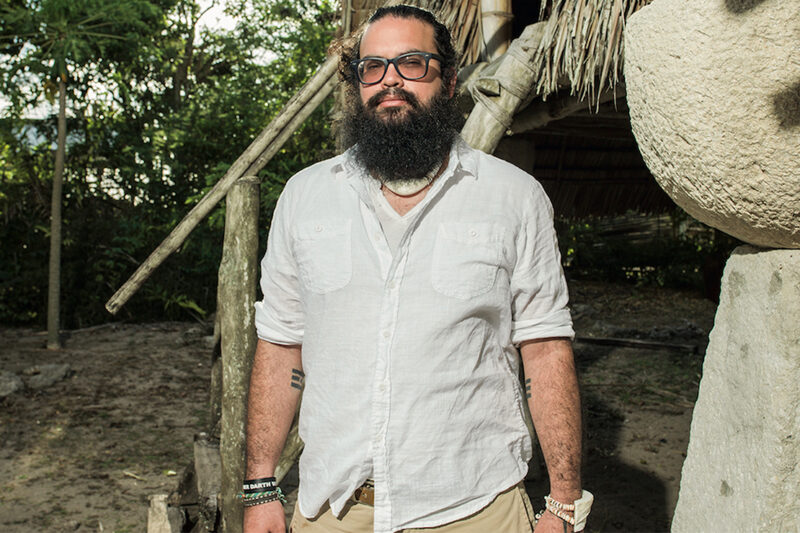Abolishing Guam’s Colonial Past Must Include Protecting Access to Abortion


Recently I joined as an expert in a lawsuit filed by the ACLU to challenge two laws that block the rights of women on Guam to abortion access. As a Chamoru, community activist and independent scholar who specializes in Guam history and the teaching of the language of its indigenous people, the Chamorus, I see helping ensure that Chamoru and other women today on Guam are empowered to make decisions about their bodies, their futures as part of our process of decolonization.
The issue of abortion access for women in Guam is something I have studied as part of Guam’s history, but something that also resonates in my own family. In 1990, Guam made headlines across the US by passing the strictest abortion bill in the US and its territories. That law not only created a number of unreasonable obstacles for women and their reproductive rights, it even went so far as criminalizing speech about abortion.
My mother, Rita, was a nurse on island for many years, and at that time served as the President of the Guam Nurses Association. working (GNA). Together with then-nurse, and current Governor of Guam Lou Leon Guerrero, she pushed the GNA to take a stand to protect access to abortion.
Resistance to the ban by women in Guam, like my mother, was powerful. The first protest that I can remember ever attending was in March 1990. I followed my mother and grandmother to a candlelight vigil and march with hundreds of others against the ban. For some this issue was one which pitted Chamoru culture against American legalism. As one passionate speaker at the rally made clear though, this was a false choice. She said, “I am taking a stand as a woman, as a Chamorro, and as an American.” The abortion ban was later struck down in court, after the GNA with other groups joined a lawsuit led by the ACLU and the late Janet Benshoof.
Still, the issue was very divisive and contentious, and my mother and those who spoke out publicly against the ban were in the minority on island in many ways. Anti-abortion beliefs were then, and remain, held by many in Guam. Attendance at one rally organized in favor of the ban was reportedly in the thousands. In fact, this historical moment was also the first time that I experienced a death threat. Because of my mother’s politics, some would call up my grandparents’ house to menace her. On one occasion, I aged 10, picked up the phone and got to hear the threat before giving the phone to my grandmother.
Today, just as in 1990, the majority of the Chamoru people are Catholic, and sometimes assert that anti-choice ideology and banning abortion access are in line with Chamoru culture and values. As someone who has extensively studied Guam’s history, I challenge this representation. Rather, ensuring access to safe and legal abortion in Guam is consistent with Chamoru values, culture and history and, indeed, there is substantial evidence that Chamoru women have long exercised autonomy and moral authority to make decisions about their pregnancies.
The Spanish colonized Guam and the rest of the Mariana Islands in the 17th century and initially forced Catholicism on the Chamoru people. Early accounts at the beginning of Spanish colonization indicate that women in Guam were more than merely vessels for their communities—they were empowered to make decisions about their bodies and families. In those accounts we see clear matrilineal/matrifocal dimensions, where lineage and symbolic societal power resides primarily with women. Chamoru women in ancient times held authority over themselves and men in their communities in many ways that frankly appalled the early Catholic missionaries, who saw as part of their evangelism the reduction of this social and cultural power. Scholarly research has also found evidence dating back to the 18th century showing that women in Guam and throughout the region have utilized a variety of methods to induce miscarriage or end their pregnancies, as well as to use birth control and other methods to control their fertility.
I have long advocated for Guam to leave behind its current status as a US territory and undergo a process of decolonization to achieve a status more equitable for the island’s people, especially the Chamorus. But decolonizing Guam cannot only be political—we must also decolonize culturally. This does not mean to try to turn back the clock or pretend colonization never happened, but rather to sift through the myriad impacts of colonization on the Chamoru people, and make decisions about what should stay, what should go, and what from the past that has been suppressed will empower the community in much needed ways today. Leaving behind restrictions that deny a woman her dignity, autonomy, and right to abortion must be part of this work.

